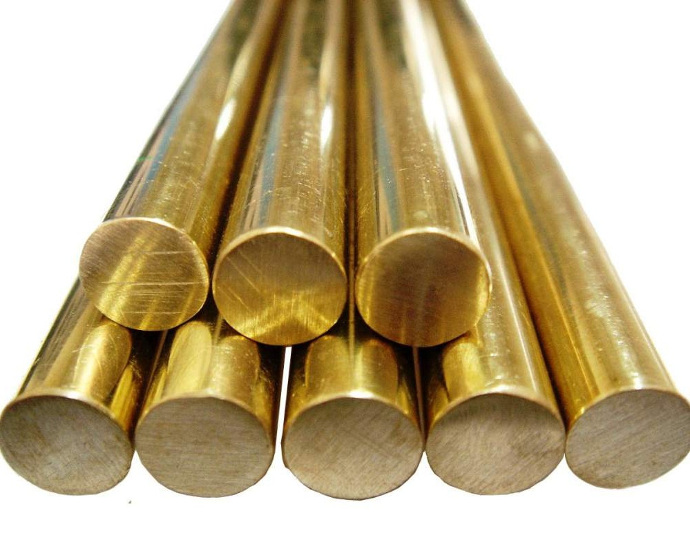
What is the density of the brass alloy: physical properties and applications of brass
Brass is a double or multilayer alloy based on copper with the main alloying element - zinc. Tin is also often added, iron, nickel, lead and manganese, other elements. To bronzes on metallurgical classification does not concern.
The density of a material is a physical quantity, which determines the ratio of the mass of material to the volume occupied. In other words, density is the amount of mass, located in 1 units of volume. In the SI system, the unit of density is considered to be kg / m3. What is the density of brass, you can learn from the physical properties of the alloy, the value of density may vary depending on the environment and measurement conditions. The density of solids can be found in the reference chemical table.
Brass: density and properties
Brass has been known to people since ancient times, in appearance the alloy resembles gold, only it is much cheaper. Due to its properties, it immediately found wide application, the alloy was first discovered in ancient Rome, and then re in 18 century.
Its appearance resembles precious metal, but there is no gold in it, the basis is an alloy of zinc and copper and some other elements, the share of which is not more 10%. Because copper contains a lot of zinc and copper, then its characteristics are very similar to these elements. By its color, the alloy can change from light yellow to red shades. The density is 8300-8700 kg / m3. Melting point of brass 880-950 o with, it depends on its composition, if it contains more zinc, then the melting point decreases. By its density, brass belongs to the group of non-ferrous metals and alloys.
By means of contact welding brass is easily welded and well rolled. If its surface is not varnished, it quickly turns black in the air, but in combination with other metals it has greater resistance to air than, example, copper, very easy to polish.
Brass alloy is well processed in cold and hot conditions, has good mechanical properties. In appearance it is very similar to copper, but unlike copper brass has high wear resistance and strength. Brass is less refractory, but easier to handle, as it is more malleable and viscous.
The heat and electrical conductivity of brass will depend on the content of the base metal, when the proportion is higher, then these properties are manifested more strongly.
The value of brass
The alloy of copper with bronze has always been very important to people, but brass has also played an important role in human history. The ancient Romans fused zinc with ore - brake, but this method soon became obsolete and another discovery was made in England, which gained popularity.
Crucibles were used to obtain the brass alloy, so the temperature could reach 1000oC. Copper is saturated with zinc vapor as a result of the finished alloy, if there were no other impurities. Inexpensive and affordable way to get brass has become very popular.
The melting point of individual zinc and copper is too different, therefore, to facilitate the production of the finished alloy began to add a ligature in small quantities, but in the finished composition. In this form, the alloy facilitates the task in industrial production. All brass is divided into two types:
- Two-component - in the composition of zinc and copper with a slight addition of other impurities.
- Multicomponent - in addition to ordinary copper and zinc there are alloying components.
The use of brass alloy
A relatively inexpensive and easy way to obtain the alloy, its unique properties have allowed it to become universal, therefore, it has many areas of application. Rods and wire are removed from it, stamped into sheets, and also make a very thin foil. Small and large details, furniture, pipes, fittings are used in many industries:
- Automotive and chemical industry
- Instrument making
- Jewelry business
- In aircraft construction, creation of sea and river vessels
The color of the alloy is very similar to gold, therefore, in the jewelry business it is often used to make jewelry, it is perfectly polished. When a real master takes over, it is difficult for an ordinary person to understand, that it is a base metal. Brass jewelry looks beautiful and expensive.
In its pure form, copper is very resistant to corrosion, and zinc is a brittle metal, by means of an alloy of these two types of metal the best properties were combined and shortcomings were minimized.
Deformed variety - tompak, it is characterized by high strength, low friction force and rust resistance.
- Foundry - it is used to make shaped products by casting, as well as semi-finished products, It contains copper 50-81%. This species does not rust, has high mechanical properties, easy to handle, due to the liquid state, resistant to friction with other materials.
- Automatic brass - due to its softness, it is used to make rods, lists, ribbons and stripes.
- Jewelry alloys.
Conclusion
In recent years, demand for brass alloy is only growing, it is mainly in demand in the Asian market. It is also bought by developed economic countries, example, European, USA . The level of brass production depends on its demand, as well as from the world copper market.




